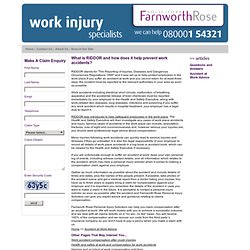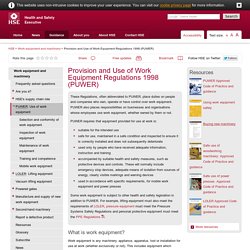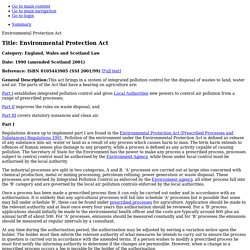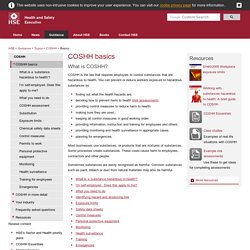

You would wear gloves to protect your hands from burns an... What is RIDDOR and how does it help prevent work accidents? RIDDOR stands for "The Reporting of Injuries, Diseases and Dangerous Occurrences Regulations 1995" and it was set up to help protect employees in the work place.If you suffer an accident at work and you cannot return for at least three days, the incident must be reported to the relevant authorities in your area as soon as possible.

Work accidents including electrical short circuits, malfunction of breathing apparatus and the accidental release of toxic chemicals must be reported immediately by your employer to the Health and Safety Executive, along with work-related skin diseases, lung diseases, infections and poisoning.If you suffer any work accident which results in hospital treatment, your employer has a legal duty to report it. RIDDOR was introduced to help safeguard employees in the work place. Provision and Use of Work Equipment Regulations 1998 (PUWER) - Work equipment and machinery. These Regulations, often abbreviated to PUWER, place duties on people and companies who own, operate or have control over work equipment.

PUWER also places responsibilities on businesses and organisations whose employees use work equipment, whether owned by them or not. PUWER requires that equipment provided for use at work is: suitable for the intended use safe for use, maintained in a safe condition and inspected to ensure it is correctly installed and does not subsequently deteriorate used only by people who have received adequate information, instruction and training accompanied by suitable health and safety measures, such as protective devices and controls. These will normally include emergency stop devices, adequate means of isolation from sources of energy, clearly visible markings and warning devices used in accordance with specific requirements, for mobile work equipment and power presses What is work equipment?
What you must do What you should know. Environmental Protection Act - Summary. Category: England, Wales and Scotland Law Date: 1990 (amended Scotland 2001) Reference: ISBN 0105443905 (SSI 2001/99) [Full text] General Description:This act brings in a system of integrated pollution control for the disposal of wastes to land, water and air.

The parts of the Act that have a bearing on agriculture are: Part I establishes integrated pollution control and gives Local Authorities new powers to control air pollution from a range of prescribed processes; Part II improves the rules on waste disposal; and Part III covers statutory nuisances and clean air. Part I Regulations drawn up to implement part I are found in the Environmental Protection Act (Prescribed Processes and Substances) Regulations 1991. The industrial processes are split in two categories, A and B.
Once a process has been made a prescribed process then it can only be carried out under and in accordance with an authorisation. Part II This regime was finally introduced under the Waste Management Licensing Regulations. Health and Safety at Work Act. Before 1974 approximately 8 million employees had no legal safety protection at work.

The Health and Safety at Work Act 1974 provides the legal framework to promote, stimulate and encourage high standards of health and safety in places of work. It protects employees and the public from work activities. Everyone has a duty to comply with the Act, including employers, employees, trainees, self-employed, manufacturers, suppliers, designers, importers of work equipment. Employers' responsibilities The Act places a general duty to 'ensure so far as is reasonably practicable the health, safety and welfare at work of all their employees'.
Employers must comply with the Act. An employer is forbidden to charge his or her employees for any measures which he or she is required to provide in the interests of health and safety (for example, personal protective equipment). Employees’ responsibilities Employees have specific responsibilities too - they must: COSHH basics - COSHH.
COSHH is the law that requires employers to control substances that are hazardous to health.

You can prevent or reduce workers exposure to hazardous substances by: finding out what the health hazards are; deciding how to prevent harm to health (risk assessment[1]); providing control measures to reduce harm to health; making sure they are used ; keeping all control measures in good working order; providing information, instruction and training for employees and others; providing monitoring and health surveillance in appropriate cases; planning for emergencies. Most businesses use substances, or products that are mixtures of substances. Some processes create substances. These could cause harm to employees, contractors and other people.
Sometimes substances are easily recognised as harmful. Risk is a ‘substance hazardous to health'? Infomation sing , warning sing, fire infomation sings , e... Warning sing for explosion , warning high voltage , warni...